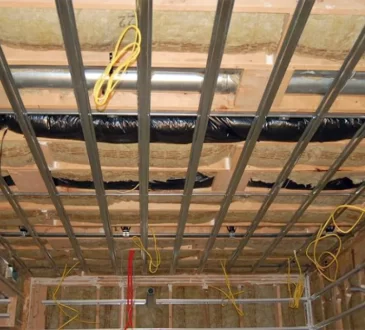The Eco-Friendly Revolution: How Sustainable Practices Influence Architectural Design in Auckland

Introduction
Architectural design in Auckland is undergoing a significant transformation, spurred by a growing awareness of environmental issues and the need for sustainable practices. This revolution in eco-friendly architecture is reshaping the city’s skyline and influencing the way buildings are designed and constructed. In this blog post, we’ll delve into the impact of sustainable practices on architectural design, exploring the innovative solutions architects are implementing to create more environmentally friendly structures.
Understanding the Context
Auckland, New Zealand’s largest city, faces unique environmental challenges due to its rapid urbanization and geographic location. As the population grows and development expands, there is increasing pressure to balance the need for growth with environmental sustainability. This context has prompted architects and urban planners to rethink traditional approaches to architectural design and adopt more sustainable practices.
Integration of Green Spaces
One notable trend in architectural design is the integration of green spaces into building design. Architects are incorporating elements such as rooftop gardens, vertical green walls, and communal parks to enhance biodiversity, improve air quality, and provide residents with access to nature. These green spaces not only contribute to the overall aesthetic appeal of buildings but also promote environmental sustainability and improve the quality of urban life.
Embracing Renewable Energy
Another key aspect of sustainable architectural design in Auckland is the integration of renewable energy sources. Architects are incorporating solar panels, wind turbines, and other renewable energy technologies into building designs to reduce reliance on fossil fuels and decrease carbon emissions. By harnessing the power of natural resources, buildings can generate clean energy and contribute to Auckland’s goal of becoming a more sustainable city.
Passive Design Principles
Passive design principles play a crucial role in sustainable architectural design. Architects are prioritizing features such as orientation, insulation, natural ventilation, and shading to optimize energy efficiency and reduce reliance on artificial heating and cooling systems. By designing buildings that passively respond to their environment, architects can minimize energy consumption and create more comfortable indoor spaces for occupants.
Materials and Construction Techniques
The choice of materials and construction techniques also significantly influences the sustainability of architectural design. Architects are increasingly opting for locally sourced, recycled, and low-impact materials to minimize environmental footprint and reduce embodied carbon. Additionally, innovative construction techniques such as modular construction and prefabrication are being employed to streamline the building process and minimize waste.
Community Engagement and Education
Community engagement and education are essential components of promoting sustainable architectural design in Auckland. Architects and developers must involve local communities in the design process, soliciting feedback and incorporating their needs and preferences into building projects. Additionally, educating the public about the benefits of sustainable architecture and providing resources for implementing green practices in their own homes and businesses can foster a culture of sustainability across the city. By empowering individuals to make informed choices and participate in sustainable initiatives, Auckland can build a more resilient and environmentally conscious community.
Global Collaboration and Knowledge Exchange
In an increasingly interconnected world, collaboration and knowledge exchange with global partners can enrich the practice of sustainable architectural design. Architects and urban planners can learn from international case studies, exchange ideas with colleagues from diverse backgrounds, and participate in global forums and conferences dedicated to sustainability. By tapping into the collective wisdom of the global community, Auckland can leverage innovative strategies and lessons learned from other cities facing similar challenges. Furthermore, sharing successes and failures on a global scale can foster a spirit of collaboration and solidarity in addressing pressing environmental issues and advancing sustainable development goals.
Challenges and Opportunities
Despite the progress made in integrating sustainable practices into architectural design in Auckland, there are still challenges to overcome. One significant challenge is balancing sustainability with economic feasibility and regulatory requirements. Sustainable materials and technologies can sometimes come with higher upfront costs, and navigating the regulatory landscape can be complex. However, these challenges also present opportunities for innovation and collaboration within the industry. By working together to develop cost-effective solutions and advocating for supportive policies, architects, developers, and policymakers can accelerate the adoption of sustainable practices and drive positive change in the built environment.
Looking to the Future
As Auckland continues to grow and urbanize, the importance of sustainable architectural design will only increase. The city faces ongoing challenges related to climate change, resource depletion, and urban sprawl, necessitating innovative solutions to create a more sustainable built environment. Architects, urban planners, policymakers, and community stakeholders must collaborate to develop holistic approaches to sustainable development that prioritize environmental stewardship, social equity, and economic prosperity. By embracing the eco-friendly revolution and harnessing the power of sustainable practices, Auckland can emerge as a global leader in green architecture and inspire cities around the world to build a more sustainable future.
Conclusion
Architectural design in Auckland is undergoing a profound transformation driven by the imperative of environmental sustainability. From integrating green spaces and embracing renewable energy to prioritizing passive design principles and sustainable materials, architects are reimagining the built environment to create more eco-friendly structures. As the city continues to grow and evolve, sustainable practices will play an increasingly vital role in shaping the architectural landscape of Auckland for generations to come.




